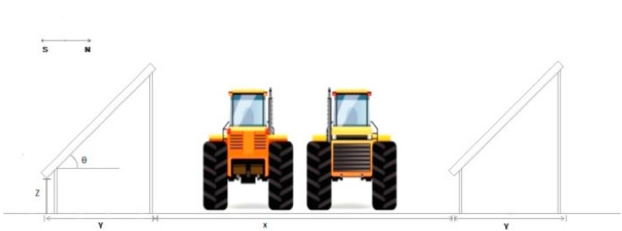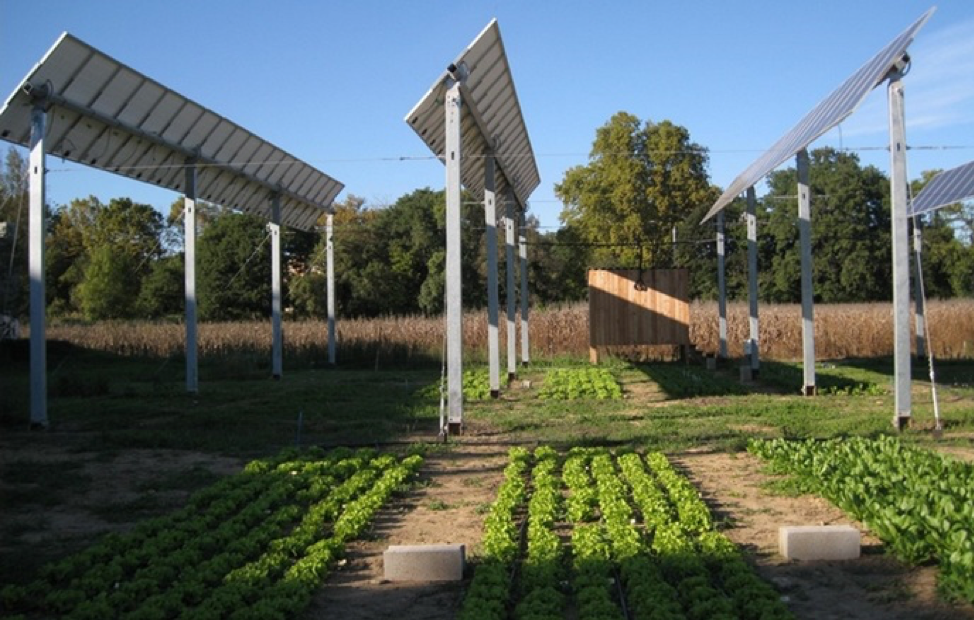Rosa Cuppari is a Master’s student in the UNC-Chapel Hill Department of Environmental Sciences and Engineering and a Graduate Research Assistant at the UNC Center on Financial Risk in Environmental Systems.
It would take between 7 and 13 million acres of solar panels to fully power the US – less than half of North Carolina’s land area. Covering half of the state with panels is, of course, impractical; while land suitable for solar is still abundant, other constraints include transmission, pre-existing use of land, and topography.
A New Approach to Land Use
Over the last decade, solar power production has been increasing steadily – especially in North Carolina. The state is now second in the nation in terms of installed solar capacity, only behind California. Across the country, some of the growth in solar has come in the form of solar farms built on land previously used for agriculture, leading to policy questions about the tradeoffs between using land for energy or food production. In Oregon, for example, this tension has come to a head as regulators have restricted the amount of solar development on high quality farmland.
As such, researchers at UNC-Chapel Hill are now working with Oregon State University to identify and quantify the tradeoffs between using land for food and energy production.
As part of that work our research team is asking what if we could continue to grow food on land after installing panels? That is the idea behind dual-use solar, also known as agrivoltaic systems (AVS).

In AVS, panels are spaced in a way that permits crops to grow underneath and between the panels and allows harvesting equipment to pass through (see Figure from Dinesh & Pearce).
Using AVS to Address the Impacts of Weather on Financial Risk
My research addresses the question of whether bundling agriculture and solar power production can increase overall farm profitability while also mitigating financial weather risk.
Both farmers and solar developers are vulnerable to weather-related financial risk. On non-irrigated land, a summer drought can decimate crops. On the other hand, solar power production is based on sunshine and power producers are subject to energy price fluctuations tied to weather conditions (e.g. hot weather = more demand = higher prices). Notably, the wet conditions favorable to agriculture are generally uncorrelated and, at times negatively correlated, with the sunny and dry conditions favorable to solar.
From a risk perspective, this suggests that bundling farming and solar power production not only diversifies the income of a landowner, which intrinsically reduces their financial risk, but that the two incomes can offset each other, as they can vary inversely, with one up while the other is down. For example, in 2016 a severe drought hit swathes of North Carolina, hurting agriculture and reducing water availability across all users. Solar power revenues could have served to mitigate lost revenues for farmers and, for power producers, shone as a means of power production that needs very little water.
Initial findings of my research suggest that there is indeed a slight negative correlation between revenue streams for farmers and power producers in Oregon. The magnitude of this correlation depends on whether solar producers have a contract to guarantee the purchase of the power they produce at a fixed price (a Power Purchase Agreement, PPA), which eliminates their vulnerability to changes in energy price. Regardless, a major takeaway from our research is that combining the incomes from farming and solar power in AVS provides the opportunity to not only increase overall profits compared to a farmer, but also to decrease volatility of those profits compared to sheer solar power production.

In fact, there is an argument to be made that AVS could actually supplement or substitute the government-subsidized crop insurance currently used by farmers; the yield from the “solar crop” could provide baseline income during drought years when crop yields decline. On the other hand, for solar developers, AVS may also become an attractive option if the price set for the power they produce through a PPA becomes lower (a national trend), and in cases in which adding a crop underneath the panels requires little to no maintenance – like pollinator habitat for apiaries.
This is just the tip of the AVS iceberg though. Research on AVS has only just begun, and their impacts on financial risk, crop growth, and water usage are only now being explored. Who knows – in a few years, NC’s farmland may also be covered in solar panels and eliminate the need to decide between energy or food production.
To learn more about the Center on Financial Risk in Environmental Systems visit: https://sph.unc.edu/cfres/center-on-financial-risk-in-environmental-systems/
To learn more about the Oregon INFEWS project visit: https://infews.org/infews/project-overview


